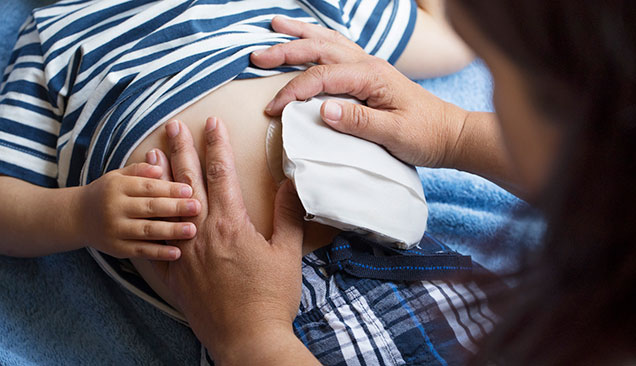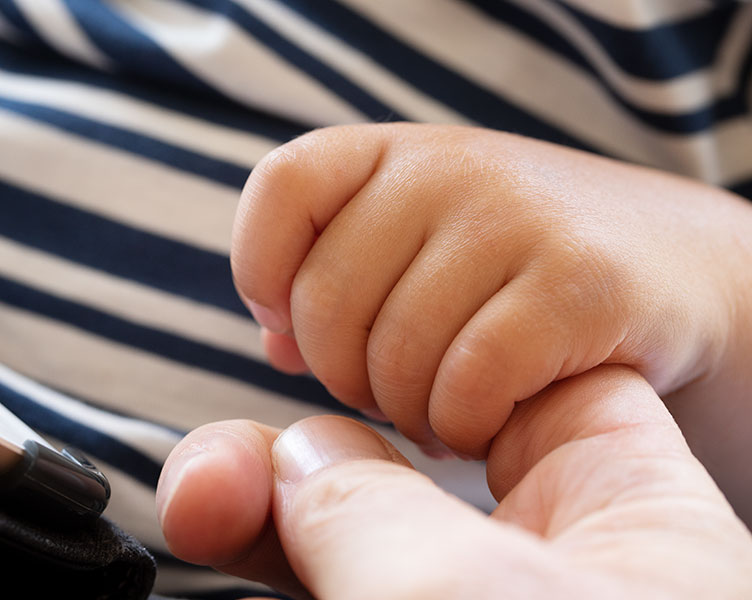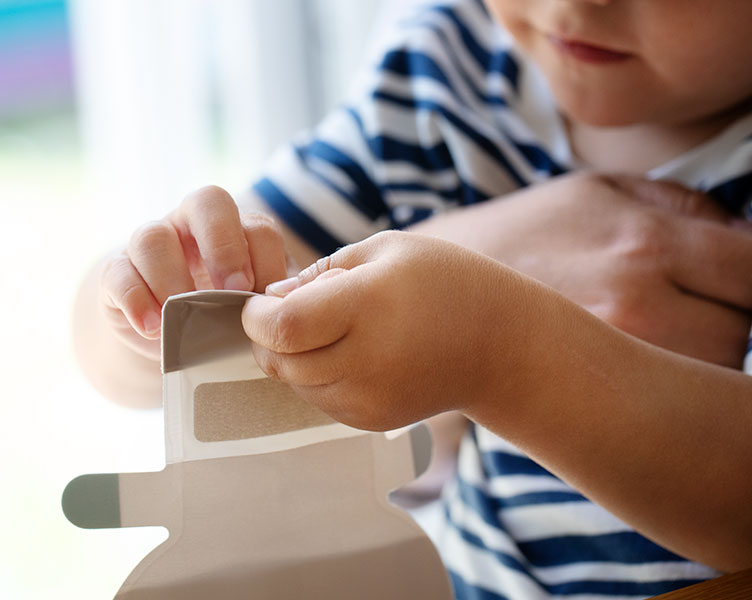Your child’s urostomy
A urostomy is a general term which describes a surgical procedure that diverts urine from a defective bladder to be evacuated from a new opening on your child's abdomen. In order to create this new opening, or stoma, a surgeon removes a part of your child's small intestine to fashion a "conduit" for urine to flow. The surgeon then detaches your child's ureters (small tubes that normally connect the kidneys and bladder) from their bladder and connects them to one end of this conduit. The other end of the conduit of intestine is pulled through your child's abdominal wall to create the stoma (opening) through which urine will pass.
As a parent, you play an important role in ensuring that the ostomy is well-maintained to ensure proper healing. The following are important topics in order to provide the best care for your child.
After the operation
It is normal for your child’s stoma to be swollen after surgery, however it will shrink to a smaller size within a few weeks.
The stoma has no nerve endings, so it will not hurt when touched, but it may bleed slightly – know that this is completely natural. However, if the urine is cloudy, foul-smelling, bloody, or your child experiences constant bleeding, contact your doctor immediately.

What is a pouching system?
Since there is no muscle around the stoma, your child will not be able to control when the urine passes through the stoma and will therefore need to wear a urostomy pouch attached to their body at all times to collect waste. The pouch is held onto the body with an adhesive called a barrier. The barrier has a hole in the middle just large enough for the stoma. It's called a "barrier" since it holds the pouch onto the body and protects the skin around the stoma so that no urine touches the skin.
Beware of skin irritation
The skin surrounding the stoma is called the peristomal skin. This area should ideally be intact without irritation, rashes, or redness - however, irritation can occur. A common cause for irritation to this area is when urine from the urostomy sits on the skin, as the skin will be exposed to moisture which can cause skin irritation. Irritation can be minimized with a correctly fitted pouch and by keeping the peristomal skin clean. Your child’s Wound Ostomy Continence Nurse or doctor will instruct you on the best ways to apply the ostomy pouch to protect the peristomal area.
This information is for educational purposes only. It is not intended to substitute for professional medical advice and should not be interpreted to contain treatment recommendations. You should rely on the healthcare professional who knows your child's individual history for personal medical advice and diagnosis.
Call your healthcare provider if you have any medical concerns about managing your child's ostomy. You may also contact a Coloplast Care Advisor for product usage and availability questions at 1-877-858-2656.



